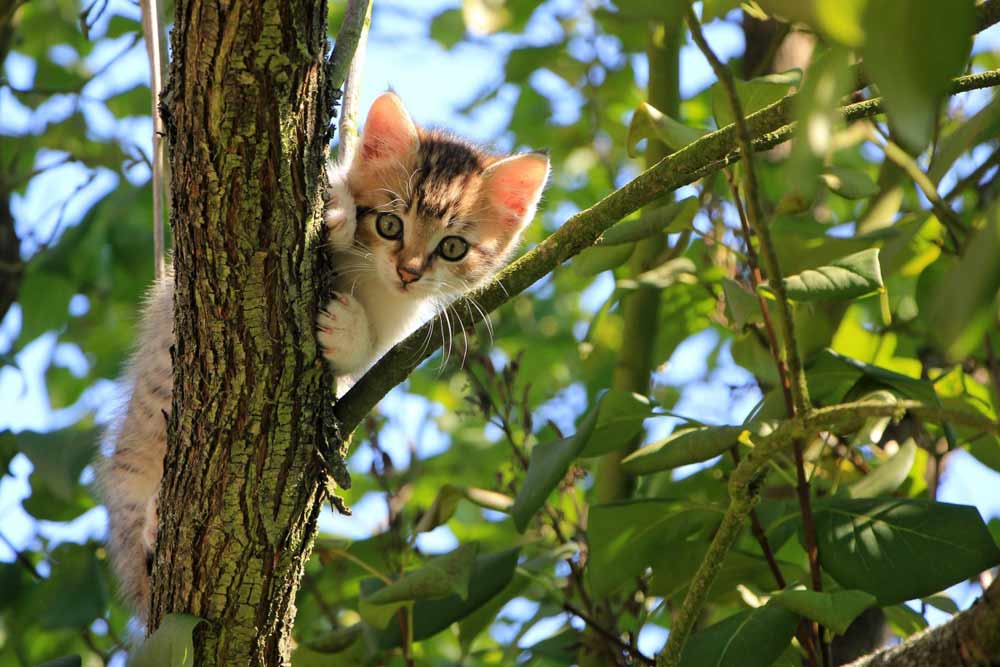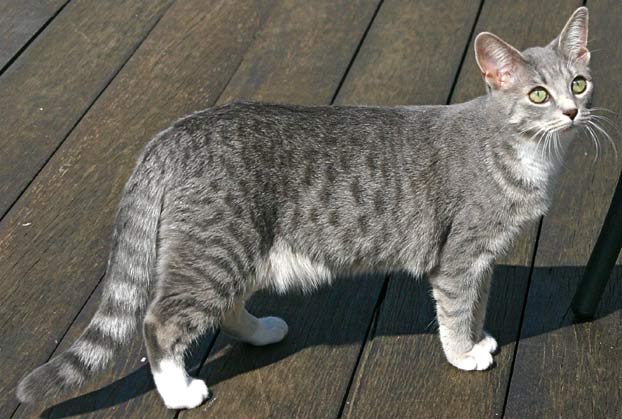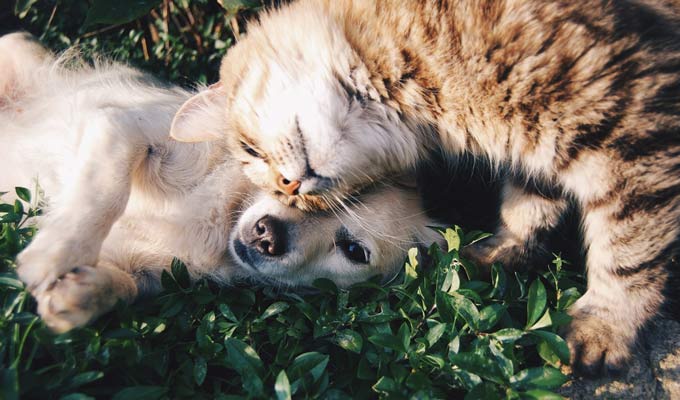How to socialize a kitten? From the moment a kitten is born, the process of socialization begins, ideally under the watchful eye of their mother. The early days are a crucial window where the feline learns to navigate the world, absorb stimuli, and form bonds. If you find yourself with a cat that has recently become a proud parent, you’ve taken a commendable step towards ensuring the well-being of the litter. Commencing the socialization process from birth sets the stage for a well-adjusted and sociable cat.
What is the best way to socialize a kitten?
The symphony of kitten socialization unfolds as a meticulous crescendo, a process that commences at the tender age of 2 weeks and unfurls its melodic tapestry until the kitten surpasses 7 weeks. This temporal overture is a delicate dance of gradual exposure, a ballet of handling, sights, and sounds that compose the backdrop of the feline world. The key notes resonate in positivity, urging a response to the kitten’s cues and a gradual, unhurried progression through these formative weeks. The experiences etched in this period become the building blocks of a well-socialized, emotionally resilient feline companion.
How do I socialize my aggressive kitten?
For kittens under the age of 7 weeks, the conventional cadence of socialization ensues, with a measured pace to avoid invoking fear. The process hinges on patience, allowing the naturally curious nature of young kittens to unfurl as they acclimate to your presence. For kittens exceeding 7 weeks, the terrain becomes nuanced, potentially warranting consultation with an experienced rescue or behaviorist. Understanding the unique temperament of an older kitten and charting a tailored approach becomes the harmonious melody to coax them into the realms of socialization.
Challenges of Delayed Socialization
In many instances, however, the reality might be different. By the time a kitten enters your life, it might have experienced a separation from its mother, be it due to being a hand-reared orphan or having spent time in an animal shelter or rescue group. Despite these challenges, the prospect of socializing the kitten remains, and the earlier you embark on this journey, the better. Time may have passed, but the potential for positive socialization experiences persists, shaping the feline’s future disposition.
Handling and Habituation: Keys to Feline Well-being
The long-term impact of early socialization becomes apparent as kittens mature into adults. Those accustomed to handling and familiar household noises tend to emerge as less stressed and more amicable cats. The significance lies not merely in fostering a tolerance for human interaction but in cultivating a genuine enjoyment of human companionship. The investment in early socialization pays dividends in the form of a confident and friendly feline presence in your home.
The Critical Window: 2 to 7 Weeks
Understanding the timeframe for optimal socialization is paramount. The critical period for kittens spans from 2 to 7 weeks of age. During this developmental window, the feline brain is exceptionally receptive to external stimuli, making it an opportune time for positive interactions. Patience and consistency during this phase are key to ensuring that the kitten forms positive associations, laying the groundwork for a harmonious relationship with its human companions.
Nurturing Positivity: Avoiding Negative Associations
As with any learning process, the approach to socialization requires finesse. It is not merely about introducing the kitten to new experiences but ensuring that these encounters remain positive. Any negative associations can create lasting fear or anxiety. Therefore, a delicate balance is necessary—creating an environment where the kitten feels safe and secure while gradually exposing it to various stimuli. This approach minimizes the risk of frightening the kitten and ensures that socialization remains a positive and enriching experience.
A Universal Imperative: Socialization for All Kittens
Regardless of the circumstances surrounding a kitten’s early days, the importance of socialization remains universal. It is a pivotal aspect of helping them acclimate to the nuances of living in human homes. Beyond adaptation, socialization empowers kittens to emerge as confident and friendly members of the family. Whether the kitten is a hand-reared orphan or a rescue group find, the commitment to socialization is an investment in fostering a well-rounded and emotionally balanced feline companion.
What Does It Mean To Socialize a Kitten?
From the tender age of 2 to 7 weeks, kittens embark on a pivotal developmental phase where their innate curiosity eclipses any latent fear. This critical period, often referred to as the kitten socialization window, is a precious span where the feline psyche is receptive to novel encounters. During this interval, the feline mind perceives the unfamiliar not as daunting threats but as intriguing opportunities. The canvas of their cognition is imprinted with the brushstrokes of new experiences, categorizing them as the norm. Essentially, it’s a time when kittens lay the foundation for their identity as contemporary cats, acquiring the essential skills to navigate the intricacies of their surroundings.
Decoding Kitten Socialization: A Neurological Odyssey
When we delve into the realm of “socializing” kittens, we plunge into a nuanced exploration of utilizing this critical developmental window. This is not merely a whimsical term; it denotes a strategic leveraging of the 2 to 7-week timeframe when the feline brain is a fertile ground for the cultivation of sociability. The evolving mindset of a kitten during this period shifts its lens from fear to fascination. What might seem mundane to us becomes imprinted as part of their burgeoning feline lexicon. Essentially, this is the juncture where your kitten not only learns the ropes of being a cat but also hones the skills imperative for navigating the perplexities of the world.
The Precarious Consequence of Absent Human Interaction
In the absence of positive human interactions during this pivotal phase, as is often the case with feral kittens, a profound consequence unfolds. Kittens, devoid of these constructive experiences, engrain a primal fear of humans, equating them with ominous entities. The repercussions extend beyond mere human aversion; fear is indiscriminate, encompassing cars, houses, and other facets of modern existence. This fear-laden imprint renders these kittens formidable candidates for future domestication challenges. Feral cats, in particular, may find themselves ill-suited for the comforts of a contemporary household, necessitating alternative forms of care.
Navigating Shades of Feral: Unraveling the Complexity
Yet, the feline narrative is not monochromatic; gray areas weave through the tapestry of circumstances. Consider the kitten with scant socialization or the cat rescued from the streets, cautious around humans but not inherently feral. In these instances, the pathway diverges from conventional socialization, as the brain may not be in the optimal developmental stage. Nevertheless, interventions akin to socialization can bridge the gap, fostering comfort around humans. Though not technically socializing, these efforts can still metamorphose a wary cat into a content companion, embodying the blurred boundaries within the feline psyche.
Crafting Domestic Bliss: The Art of Feline Contentment
The overarching goal, if we desire felicity for our feline companions, is cultivating an environment where they relish human company, exuding tranquility within our domiciles. This necessitates an abundance of affirmative exposure to quotidian stimuli, a symphony of experiences harmonizing to bolster confidence. These encompass nuanced facets of feline existence:
- Different people (ideally including a mix of ages and ethnicities)
- Different toys
- Handling (including a vet exam)
- Different textures of cat food (wet food and dry food)
- The cat carrier and car journeys
- Grooming and toothbrushing
- Sounds (including fireworks and thunderstorms)
- Different types of litter and litter boxes
- Other pets
In weaving this rich tapestry of experiences, we lay the groundwork for a harmonious coexistence between feline and human, where the cat not only adapts but thrives in the mosaic of our shared world.
What Happens if You Don’t Socialize a Kitten?
Kittens, when not adequately socialized and handled during their formative period, may develop an aversion to human contact, leading them to exhibit reclusive behavior. This fear of interaction can manifest in a proclivity to hide from sight, hindering the establishment of a comfortable bond between the feline and its human companions.
Positive Influences in Family Homes
Even in the absence of intentional socialization efforts, kittens raised within a familial environment may inadvertently accrue positive experiences. A household setting where a kitten receives daily nourishment from a human and becomes accustomed to the ambient sounds of everyday life can contribute to a baseline level of familiarity with humans. These subtle exposures lay the groundwork for a more balanced socialization spectrum.
Contrasting Socialization Experiences
A stark contrast emerges when comparing such familial environments to the upbringing of a feral cat. Deprived of exposure to daily human interactions and commonplace household noises during their early developmental stages, feral cats represent the other end of the socialization spectrum. The range of potential outcomes highlights the pivotal role early experiences play in shaping a cat’s social tendencies.
Potential Consequences of Limited Socialization
In scenarios where a kitten undergoes minimal socialization and remains untouched by positive experiences, the consequences can be profound. Such cats may mirror the behavior of feral kittens, exhibiting an innate fear of human contact, a penchant for concealment, and, in extreme cases, aggression when handled. In these instances, the stress imposed by indoor confinement may necessitate alternative living arrangements, such as rehoming as barn cats, allowing them a life with minimal human interference.
Natural Socialization in Family Settings
Contrary to cases of complete socialization neglect, kittens reared in family homes tend to naturally absorb some social skills. Routine activities like responding to the sound of a vacuum, positive interactions during feeding, and encounters with other household pets, such as dogs, contribute to a gradual socialization process. These partially socialized cats often adapt well to indoor living environments.
Balancing Act: Managing Socialization Risks
Despite the innate social tendencies fostered in family settings, negative experiences during the early stages of development can pose significant challenges. Incidents like being frightened by a dog or harmed by an overexcited child may have lasting repercussions. Careful and deliberate socialization management becomes imperative, as mishandled interactions can potentially undermine the positive foundation laid during a kitten’s natural exposure to its surroundings.
How to Socialize a Feral Kitten in 10 Simple Steps
Within the intricate tapestry of socializing a feral kitten, each small triumph becomes a cause for celebration. Picture the acknowledgment and appreciation of incremental victories, understanding that the journey towards complete socialization is as unique as the individual kitten itself. In this evolving saga, patience transcends into a virtue, empathy morphs into a guiding light, and the nuanced approach becomes the compass that navigates the transformation of a timid feral kitten into a trusting and affectionate companion.
Other Interesting Articles
- Ocicat Cat Breed Profile: Health, Facts, Traits, Groom, Care
- Ojos Azules Cat Breed Profile: Health, Traits, Groom, Care
- Oregon Rex Cat Breed Profile: Health, Traits, Groom, Care
- Oriental Bicolor Breed Profile: Health, Traits, Groom, Care
- Oriental Longhair Breed Profile: Health, Traits, Groom, Care
- Oriental Shorthair Breed Profile: Health, Traits, Groom, Care
- Peterbald Cat Breed Profile: Health, Traits, Groom, Care
- Pixie-Bob Cat Breed Profile: Health, Traits, Groom, Care
- Ragamuffin Cat Breed: Health, Facts, Traits, Groom, Care
- Russian White Cat Breed Profile: Health, Traits, Groom, Care
- Serengeti Cat Breed Profile: Health, Traits, Groom, Care
- Savannah Cat Breed Profile: Health, Traits, Groom, Care
- Selkirk Rex Cat Breed Profile: Health, Traits, Groom, Care
- Singapura Cat Breed Profile: Facts, Coat, Traits, Groom, Care
- Sokoke Cat Profile, Traits, Health, Facts, Grooming, Care
- Somali Cat Profile, Traits, Health, Facts, Grooming, Care
- Turkish Angora Cat Profile, Traits, Health, Grooming, Care
- Sphynx Cat Breed: Profile, Traits, Health, Grooming, Care
- Turkish Van Cat Breed: Profile, Traits, Grooming, Care
- Toyger Cat Breed: Profile, Traits, Health, Grooming, Care




